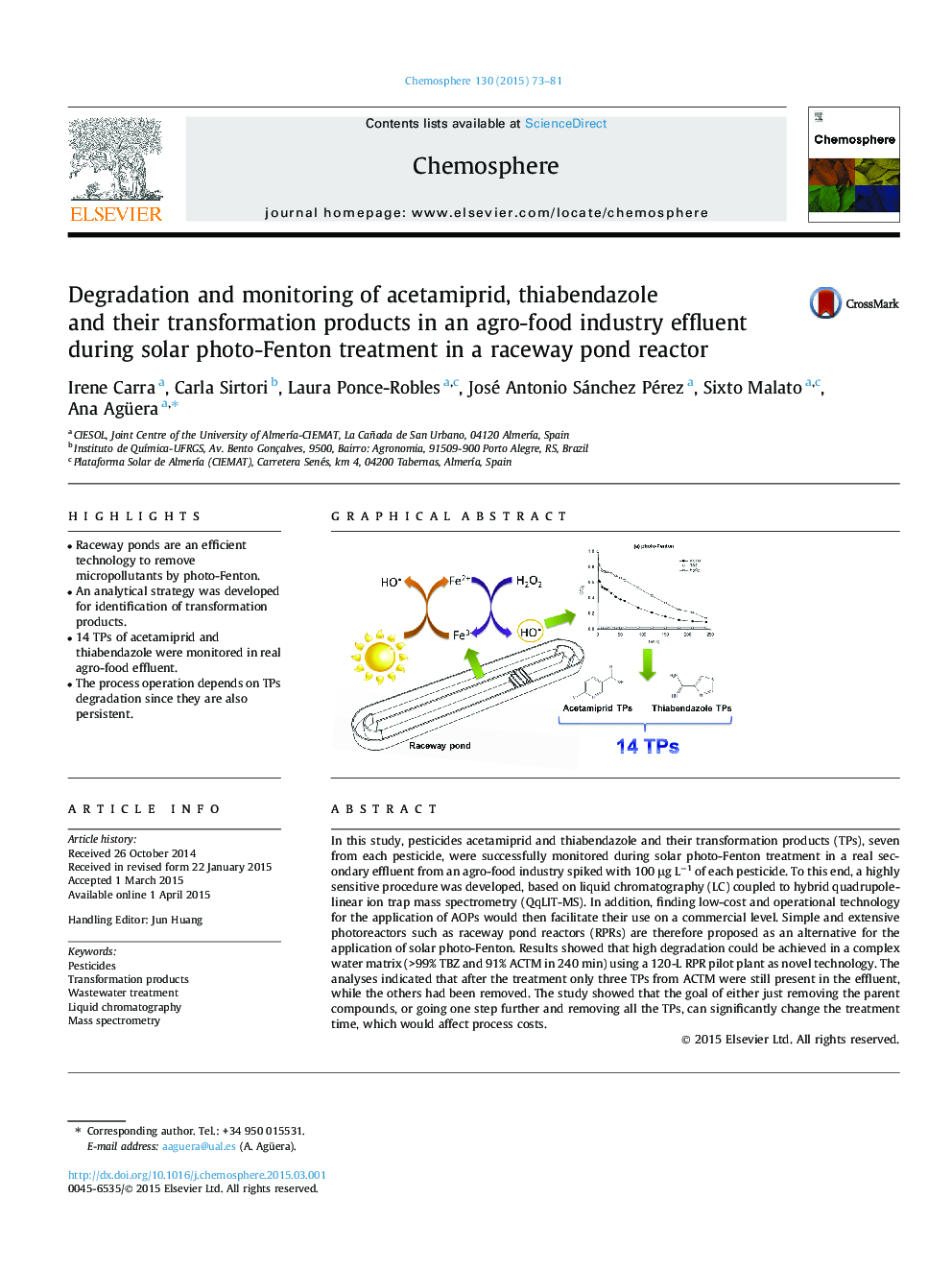| Article ID | Journal | Published Year | Pages | File Type |
|---|---|---|---|---|
| 4408326 | Chemosphere | 2015 | 9 Pages |
•Raceway ponds are an efficient technology to remove micropollutants by photo-Fenton.•An analytical strategy was developed for identification of transformation products.•14 TPs of acetamiprid and thiabendazole were monitored in real agro-food effluent.•The process operation depends on TPs degradation since they are also persistent.
In this study, pesticides acetamiprid and thiabendazole and their transformation products (TPs), seven from each pesticide, were successfully monitored during solar photo-Fenton treatment in a real secondary effluent from an agro-food industry spiked with 100 μg L−1 of each pesticide. To this end, a highly sensitive procedure was developed, based on liquid chromatography (LC) coupled to hybrid quadrupole-linear ion trap mass spectrometry (QqLIT-MS). In addition, finding low-cost and operational technology for the application of AOPs would then facilitate their use on a commercial level. Simple and extensive photoreactors such as raceway pond reactors (RPRs) are therefore proposed as an alternative for the application of solar photo-Fenton. Results showed that high degradation could be achieved in a complex water matrix (>99% TBZ and 91% ACTM in 240 min) using a 120-L RPR pilot plant as novel technology. The analyses indicated that after the treatment only three TPs from ACTM were still present in the effluent, while the others had been removed. The study showed that the goal of either just removing the parent compounds, or going one step further and removing all the TPs, can significantly change the treatment time, which would affect process costs.
Graphical abstractFigure optionsDownload full-size imageDownload as PowerPoint slide
